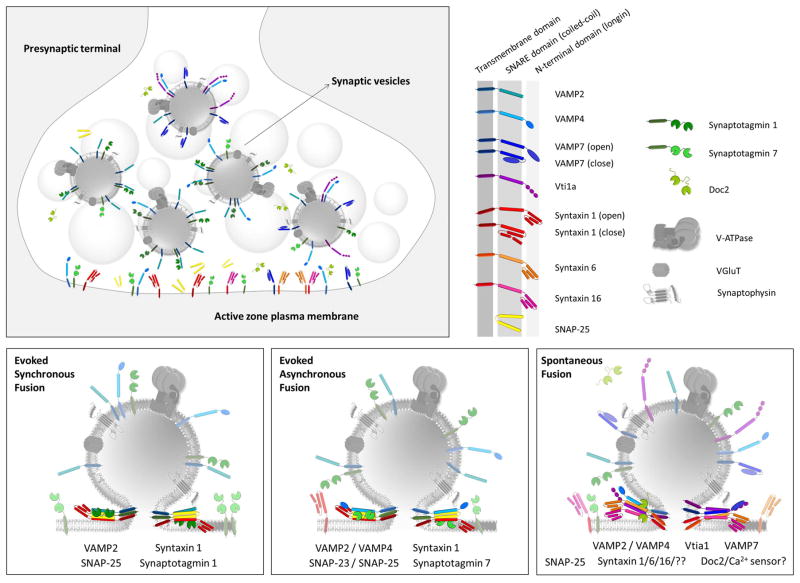Figure 1.
Top left: Schematic representation of a presynaptic terminal filled with intermixed synaptic vesicles. Recent studies suggest that synaptic vesicles may contain variable combinations of SNARE proteins, as such a vesicle’s molecular composition rather than location determines its recycling trajectory.
Top right: Representation of the proteins depicted in the figure. The transmembrane, SNARE and N-terminal (longin) domains of several SNARE proteins are specified.
Bottom: Putative composition of synaptic vesicles and their interaction partners giving rise to the evoked synchronous, asynchronous and spontaneous modes of neurotransmitter release. Although, synchronous fusion requires the canonical SNARE complex composed of VAMP2, SNAP-25 and syntaxin1, vesicles giving rise to asynchronous and spontaneous modes of neurotransmitter release may use a diverse set of SNAREs.

